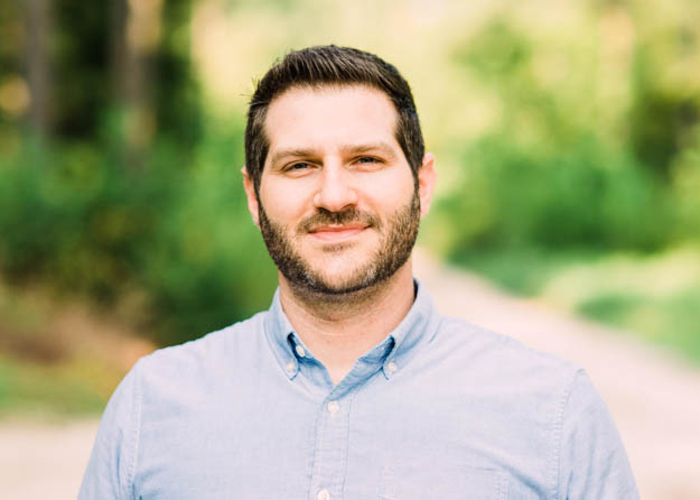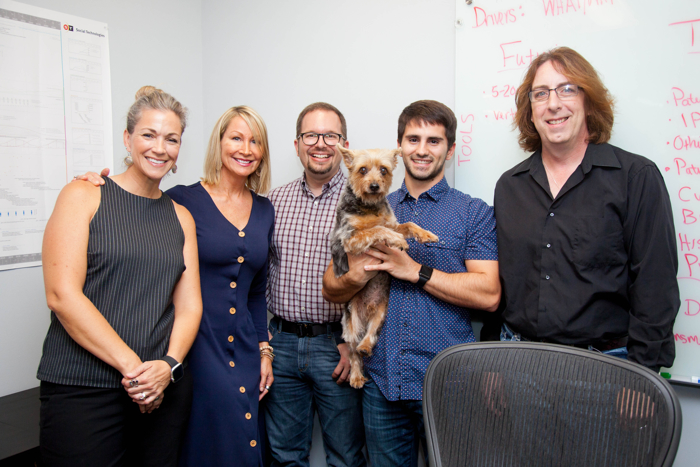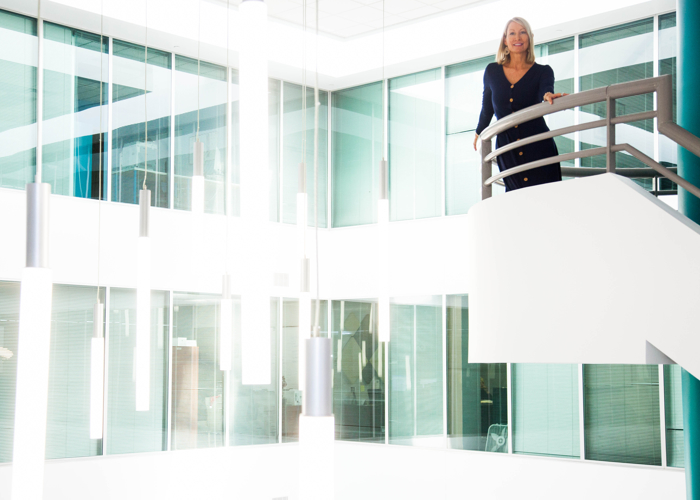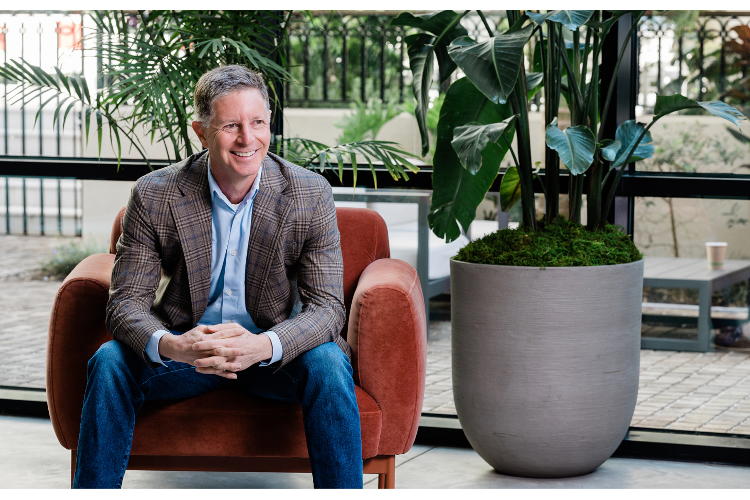Smart home, smart travel: Disruptive tech companies in Tampa Bay Area
Talking forks. Robots on patrol. Driverless buses. As technology continues to revolutionize our world, such innovative ideas are not as far away from the Tampa Bay Area as you might think.
The day may come when your fork talks to you — and literally tells you to put it down because you’ve consumed your allotted calories. Robots may patrol your home for intruders and eliminate pests or rodents.
Your home in the future may be a place where your smart oven or stove adjusts its temperature, smart-cleaning robots respond to the sound of a spill, you learn how to be a master electrician or plumber through holograms, and body scanners and health-diagnostics devices monitor your health.
One of the most exciting things is that your home becomes your healthcare center, according to Michael Vidikan, VP of Tampa-based Cognis Group.

“You do your diagnostics at home and go [to the doctor] when there’s really an issue,” Vidikan says. “If you need a prescription, a Walgreens drone is sent in to make the delivery maybe.”
But that reality may be a decade away for the elite. For now, many of us live in “stupid” homes, Vidikan says.
The median age of the American home is 37 years old, he says, citing a 2016 survey by the National Association of Home Builders reported in Housingwire.
That means the homes predate the connected appliances and devices required to make this smart home scenario a reality. Changing that reality depends largely on us, our landlords and/or our builders, he says.
Working with different technologies
In the meantime, things can get pretty complicated as we try to get technologies manufactured by different companies to work together. One company trying to simplify things is the Brooksville-based Atmos, whose AtmosControl technology can centralize the control function.
“We hope it will be viewed as kind of glue that holds the smart home together,” says Mark Lyle, the company’s CEO and CTO.

Atmos wants to solve problems people are having controlling three, four, five or six different devices that might not work together smoothly — if they work with each other at all. Pre-registration for the AtmosControl technology is available at the company’s website.
“Customers who have bought several of these smart devices are having a hard time controlling them all,” Lyle explains. “What sounded like a good deal in the beginning … has become kind of a mess because of all the different app and control methods.”
As the smart technology industry booms, compatibility issues naturally follow, he points out.
What to look out for
There’s also a more insidious consequence. People are buying smart gadgets, often without thinking about how the information is shared. Cyber thieves can get insights into a family’s daily routine, points out Kate Whitaker, Communications and Marketing Manager for Cyber Florida: the Florida Center for Cybersecurity operating at the University of South Florida. In theory and sometimes in practice, thieves can use information gathered by smart devices to know a user’s location and thus know when he or she is not at home.
So when you buy smart-home technology, it’s important to take some basic precautions.
“People shouldn’t identify themselves with own names, [or] their pet’s names on the router,” warns Sri Sridharan, Cyber Florida’s Director.
The router, which is connected to the Internet, should have a secure password, not the one automatically assigned to it by the manufacturer, he advises.
The manufacturer can’t make the devices safe without help. “It takes everyone to do their part,” Sridharan says.
As technology makes our lives easier, we need to exercise caution. “There is a lot of data that is being exchanged between multiple devices,” Sridharan says. “You don’t know where it’s all going.”
If your data is on a network, that network needs to be secure. Devices shouldn’t be vulnerable to hacking either.
“If it’s a free Wi-Fi network, you stand a chance of getting that data stolen or pilfered,” he explains. “We need to be sure, if the data is stored, it’s stored in an encrypted fashion.”
Consumers should be aware of the brand. “Credible companies” pay attention to cyber proofing, he says.
As people add more apps to their smartphones, Sridharan expects cybersecurity to lag “a little bit behind,” but eventually catch up, he says.
“Practice good cyber hygiene,” he advises.
Smart travel planning is here
Technology is expanding in the world of travel as well. Chicke Fitzgerald, CEO of Solutionz.com solutionz.com is bringing smartness to the industry.
“Smartness isn’t just the technology itself,” she explains. “It’s timing. It’s relevance, and it’s accessibility.”

Through the use of digital technology, Solutionz allows people to easily book accommodations or an airplane flight right after purchasing tickets for a conference, funeral or another out-of-town event.
It’s a lot more relevant then than later, she says, comparing it to walking through the restaurant trying to sell fries 20 minutes after someone bought a hamburger.
“We call that the ‘do you want fries methodology’,” she says.
The company’s technology can add trip planning to website landing pages, photos, videos, and blogs, enabling publishers to share a portion of the profits. It works similar to cash back on your credit card or an affiliate program.
“We take people to where they need to be at the time they know they need to travel,” Fitzgerald continues. “We flip the business model on its head. We don’t charge for what we do. We actually share the revenue from what we do. And then we give back a minimum of 10 percent back to the charity of choice of our client.”
A blogger, for example, could post a code on his or website enabling readers to click and buy tickets to the featured event.
“Right now, what media does is media leaves me hanging. It’s up to me to figure all that out,” she says. “All we’re doing is consolidating all of that out into a single executable function.”
Fitzgerald, who has 40 years of experience in the travel industry, experienced the awkwardness of the booking process when her 17-year-old niece Sarah Schoenfeld severed an arm in an ATV accident in Wyoming in 2007. She was elected to make the family’s arrangements for getting to and staying in Billings, MT, an area of 43.52 square miles.
“What I really needed was a hotel nearby the hospital and I didn’t know where the hospital was,” she says.
She decided to solve the problem for others. “This happens every day,” she adds. “People get that awful phone call.”
Now the service is available globally, with customer service in 40 languages. Solutionz has been tweaking its product for a couple of years and added self-service capability in July.
The connected vehicle pilot
Additionally, research is underway in the area of connected vehicles.
While manufacturers already are making cars that help prevent accidents, current collision warning and prevention systems don’t involve communications between vehicles. The next step is equipping cars and buses to talk to one another and to traffic infrastructure, like traffic signals.
“Connected vehicles are probably the intermediate phase leading to automated vehicles,” explains Sisinnio Concas Ph.D., Program Director for Autonomous-Connected Mobility Evaluation at USF’s Center for Urban Transportation Research.
With a $17 million, U.S. Department of Transportation grant, the Tampa-Hillsborough County Expressway Authority is bringing innovative connected vehicle technology to the downtown Tampa area. Its goals are threefold: to improve safety and traffic flow and limit traffic impact on Tampa’s urban scene.
To do so, it has been using test equipment installed on vehicles that warns drivers of potential hazards early.
“Our pilot will provide drivers with better information so they can make better decisions in a more timely manner,” says Bob Frey, Planning Director at the Tampa-Hillsborough Expressway Authority. “At some point down the road, I do believe autonomy and connectivity will intersect. We’re not there.”
Tampa was one of three chosen for the Connected Vehicle Pilot Deployment Program. The others are in New York and Wyoming.
Frey says the goal is to provide drivers with better information early, then measure the impact of that on the Meridian Avenue corridor. The equipment warns drivers of potential safety issues like a car braking hard ahead of them or a pedestrian using the crosswalk ahead.
THEA is currently in the project’s final phase, which began in September and lasts for 18 months. Concas will be evaluating the mass of data being collected; his team includes Achilleas Kourtellis, Ph.D. (Civil Engineering), Senior Research Associate; Robyn Kibler, Ph.D. (Economics), Post-Doctoral Scholar; Mehrad Eslami, Ph.D. Candidate (Computer Science); and Zhila Nouri, Ph.D. Candidate (Computer Science).
“All sorts of experimental controls are in place to make sure the data they are getting is accurate and true and is not biased,” adds Frey.
The data collected will help determine if connected vehicles can improve traffic mobility and safety. A protocol also must be developed that enables the vehicles to communicate effectively.
As we move toward automated vehicles, the full impact isn’t fully known.
“What is going to be the impact on the transportation infrastructure?” asks Concas, who holds a Ph.D. in economics from the University of Sassari in Sassari, Italy, and a Ph.D. in urban and regional economics from USF. “When you have all these fully autonomous vehicles, people who are no longer behind wheels can spend time doing other things.”
Polk County — an AV proving ground
In Polk County, off Interstate 4, a 400-acre research facility called SunTrax will be a place to test these technologies in a controlled environment.
Developed by Florida’s Turnpike Enterprise, the facility will feature a 2.25-mile oval track capable of handling high-speed traffic on multiple lanes. The infield area, consisting of 200 acres, will simulate an urban area where testing is done on interactions between AV and transit, pedestrian and bicycles.
Located next to Florida Polytechnic, the first phase is expected to open by spring, 2019.
Building SunTrax, is “an incredible opportunity for the state and I think a way to attract the industry into the state,” says Randy Avent, the university’s President.
“Anything we could do now to attract it into the state is a big thing,” adds Avent, describing the autonomous vehicle as an “up to $1 billion industry.”
In September, Florida Poly announced the creation of Advanced Mobility Institute, a university-affiliated technology research center whose mission is to develop and test AV technology. It also offers a course in AV systems and self-driving vehicles.
“Most people are really focusing on working on the technology because it’s sexy,” points out Avent, who holds a Ph.D. in biomedical mathematics and engineering from the University of North Carolina in Chapel Hill. “Not too many people are looking at the science of how do I test it? How do I verify it?”
Just as with smart-home technology, vulnerabilities exist. When it comes to vehicles, it’s because cars are driven with so many microchips, points out Sridharan.
“In my opinion, that technology is still evolving,” he says, adding car manufacturers need to make it difficult to locate the IP address.
Some of these and other innovative disruptive tech companies will be participating in the 2019 Synapse Summit in Tampa.



















